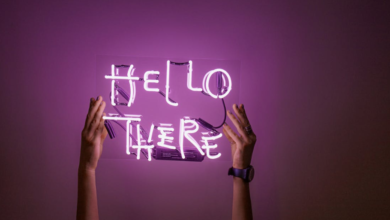Mastering Ad Inspiration: How AI-Powered Libraries Transform Creative Strategy

The blank canvas. The blinking cursor. The dreaded creative block that hits right when you need breakthrough campaign ideas the most. Every creative strategist knows this feeling intimately—that moment when you’re staring at a brief, knowing you need something fresh and compelling, but inspiration feels miles away.
What separates successful creative strategists from the rest isn’t just talent or experience. It’s having the right systems in place to consistently tap into creative gold, especially when the pressure is on.
The Creative Research Revolution
Think about how creative research used to work. You’d manually scroll through competitor feeds, screenshot interesting ads, maybe bookmark a few campaigns that caught your eye. It was time-consuming, unsystematic, and frankly, pretty hit-or-miss. You might stumble across a brilliant campaign, but you had no real way to analyze why it worked or find similar winning concepts.
The landscape has shifted dramatically. Today’s most effective creative strategists leverage AI-powered ad libraries that don’t just store advertisements—they analyze them, score them, and reveal the patterns behind high-performing creative.
Imagine having access to over 10 million ads from platforms like TikTok and Meta, all analyzed for performance potential and tagged with relevant themes. Instead of spending hours hunting for inspiration, you can search by industry, creative style, performance metrics, or even emotional triggers. It’s like having a crystal ball for creative strategy.
Beyond Basic Ad Collections
Here’s where most people get it wrong: they think an ad library is just a fancy Pinterest board for marketers. The real power lies in the intelligence layer built on top of the creative assets.
Consider this scenario: You’re launching a fitness app campaign and need fresh angles beyond the typical “before and after” approach. A basic ad collection might show you hundreds of fitness ads, leaving you to guess which elements actually drove results. An AI-analyzed library, however, reveals that user-generated content featuring workout struggles (not successes) performs 40% better for app downloads in the 25-34 demographic.
This isn’t just inspiration—it’s strategic intelligence that transforms how you approach creative development.
Performance Scoring Changes Everything
The most sophisticated ad libraries go beyond organization to actually predict performance potential. They analyze elements like visual composition, copy structure, call-to-action placement, and emotional resonance to generate performance scores.
Let’s say you’re researching e-commerce ads for a new product launch. Traditional research might surface visually appealing ads that actually performed poorly. Performance-scored libraries surface the ads that actually converted, even if they don’t look like conventional “good” creative.
This distinction matters enormously. A beautifully shot product video might get thousands of likes but generate few purchases. Meanwhile, a seemingly simple user testimonial might drive exceptional conversion rates. Performance scoring helps you identify the difference.
See also: The Future of Wearable Tech: Beyond Smartwatches
The Facebook Ad Library Advantage
While exploring various ad libraries, don’t overlook the wealth of insights available through analyzing Facebook ad library data alongside other platforms. Cross-platform analysis reveals fascinating patterns about how successful campaigns adapt their messaging across different environments.
Facebook’s creative landscape offers particular insights into how brands build trust through social proof, community engagement, and authentic storytelling. When combined with TikTok’s trend-driven, entertainment-first approach, you get a complete picture of what resonates across the customer journey.
Strategic Theme Mining
One of the most powerful applications involves theme-based research rather than competitor-focused analysis. Instead of just looking at what your direct competitors are doing, you can explore broader creative themes that resonate with your target audience.
For instance, if you’re marketing a productivity tool, you might discover that “overwhelmed professional” themes consistently outperform “efficiency optimization” angles across multiple industries. This insight lets you tap into proven emotional triggers while differentiating from competitors who focus purely on features.
Theme mining also reveals seasonal patterns, emerging trends, and cultural moments that smart strategists can leverage before they become oversaturated.
Adaptation Over Imitation
The goal isn’t to copy successful ads but to understand their underlying principles and adapt them to your unique context. This requires looking beyond surface-level creative elements to identify the strategic decisions that drive performance.
Take a viral TikTok ad that drove massive app downloads. Rather than recreating the exact video style, dig deeper: Was it the opening hook that grabbed attention? The specific pain point it addressed? The way it demonstrated value in the first three seconds? Understanding these elements lets you apply winning principles while maintaining your brand voice.
AI-generated script variations can help bridge this gap by showing you how successful ad concepts might be adapted for your specific product, audience, or brand personality.
Building Your Creative Intelligence System
The most successful creative strategists treat ad research as an ongoing intelligence-gathering operation rather than a last-minute scramble for ideas. They build systems for consistently identifying, analyzing, and cataloguing high-performing creative approaches.
This might involve setting up regular research sessions to explore new themes, tracking performance patterns across different campaign types, or maintaining inspiration libraries organized by strategic intent rather than visual similarity.
The key is developing a systematic approach that feeds your creative process continuously, not just when you’re stuck or facing a deadline.
Competitive Intelligence Without the Guesswork
Smart competitive analysis goes beyond tracking what your rivals are doing to understanding why their creative choices are working (or failing). AI-powered libraries reveal which competitor campaigns are actually driving results versus which ones just look impressive.
This intelligence helps you identify genuine threats, spot market gaps, and understand shifting audience preferences before they become obvious to everyone else. You might discover that a competitor’s flashy video campaigns are underperforming while their simple carousel ads are driving most conversions.
The Future of Creative Strategy
The creative strategists who thrive in the coming years will be those who master the intersection of human creativity and artificial intelligence. They’ll use AI to handle the heavy lifting of research, analysis, and pattern recognition while focusing their human skills on strategy, adaptation, and brand-specific creativity.
This doesn’t mean creativity becomes automated—it means creative professionals can spend less time on manual research and more time on the high-level strategic thinking that drives breakthrough campaigns.
The blank canvas doesn’t have to be intimidating when you have the right intelligence systems in place. With AI-powered ad libraries providing the insights, performance data, and strategic intelligence you need, creative blocks become creative opportunities. The question isn’t whether you can find inspiration—it’s whether you’re using the most sophisticated tools available to turn that inspiration into winning campaigns.




